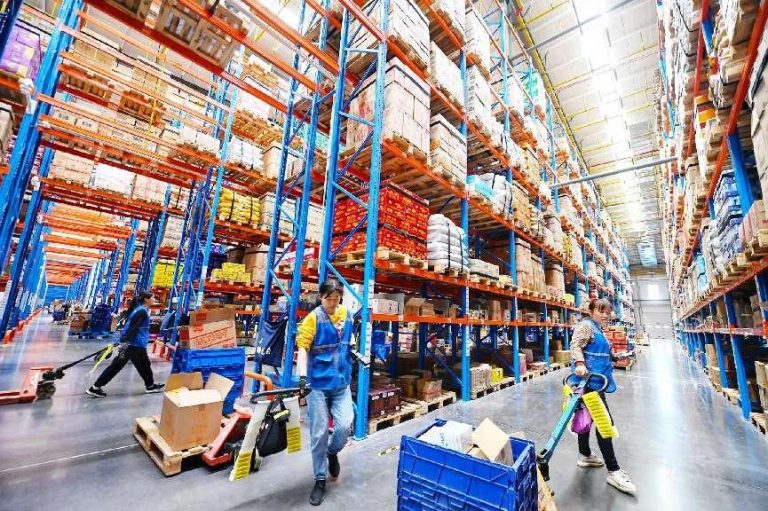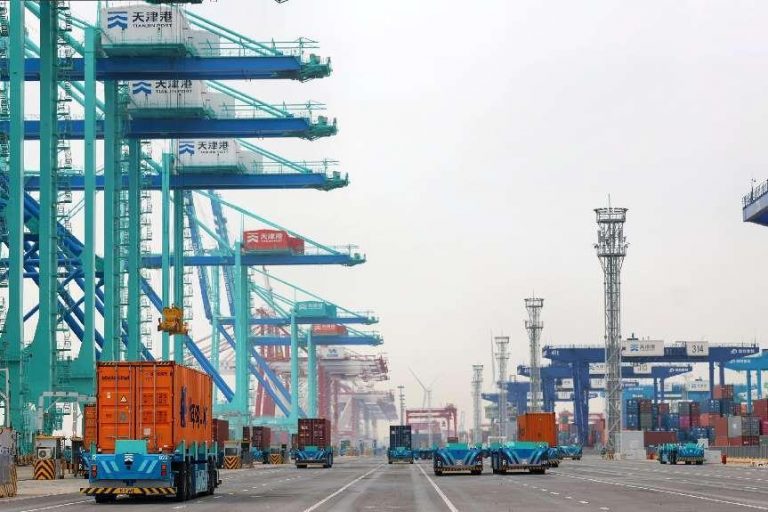
By Du Haitao, Han Xin, Jin Bo, People’s Daily
The logistics sector, which serves as a bridge between production and consumption, is a vital link that ensures the smooth flow of economic activity.
China’s social logistics rose 4.4 percent year-on-year between January and April to 107.6 trillion yuan (about $15.07 trillion), up 0.5 percentage points from the first-quarter figure. The China Logistics Prosperity Index stood at 51.5 percent in May.
These statistics indicate a sound recovery of the Chinese logistics industry since this year, with significant indicators continuing to rise. The continuous improvement in the national economy has consolidated the excellent momentum for developing the logistics industry, offering strong support for stabilizing the economy, expanding domestic demand, and promoting consumption.
At 8:00 pm on May 31, China’s mid-year “618” shopping festival started. Soon after placing the order, a villager from Lhoka prefecture, southwest China’s Tibet autonomous region, received the smart LCD TV delivered by JD Logistics, the delivery arm of Chinese e-commerce giant JD.com.
This year, the company placed pre-sale commodities at thousands of warehouses in more than 300 cities across China, enabling the goods to be delivered faster after orders are placed.
Customs clearance is getting smoother. At the Qianwan Container Terminal of Qingdao Port in east China’s Shandong province, 17 tons of polyester knitted fabric imported by a garment manufacturer in Shandong’s Yantai was unloaded from a vessel and then immediately shipped to the manufacturer’s factory for production.
According to an executive of a logistics company in charge of the imported fabric, a new monitoring model has been launched by customs authorities in Qingdao that introduces machine inspection and ship-side direct unloading. It decreases the container lifting and transferring procedure, which saves customs clearance time and reduces logistics costs, the executive said.
From the rising business volume of express delivery to the busy cargo ships frequently seen at ports, the accelerated recovery of China’s logistics sector this year reflects the country’s vitality.
Statistics indicate that China’s courier sector saw its delivery volume exceed 50 billion parcels this year as of May 31, and the milestone was achieved 27 days earlier than in 2022. In the first four months of 2023, the country’s commercial freight volume increased 7.5 percent year-on-year to 16.53 billion tons, and the cargo throughput at ports across the country stood at 5.28 billion tons, up 7.6 percent from a year ago.
The China Federation of Logistics and Purchasing (CFLP) said the total revenue of the logistics industry rose 7.5 percent year-on-year in the first four months, 0.8 percentage points higher than that of the first quarter. In particular, over five percentage points of the growth came from the transporting and warehousing services and the express delivery sector.

“Policies to expand domestic demand have emerged, and online and offline consumption scenarios have been integrated. Instant logistics services connect restaurants, supermarkets, florists, and pharmacies in neighborhoods. This has further driven community consumption,” said Zhou Zhicheng, a researcher with the CFLP and deputy head of the China Society of Logistics.
The continuous progress of digital transformation also enriched the commercial application scenarios of intelligent logistics.
For instance, an intelligent control system is launched at a port in north China’s Tianjin municipality, enabling customs authorities to monitor berthing and cargo handling in real-time remotely.
This system makes it easier for foreign and domestic trade cargos to share the same vessels, said Sun Yan, an executive with the port. According to the man, the system has lifted the efficiency of domestic feeders and helped launch ten new routes for domestic trade.
New business models of logistics created by the Internet, big data, cloud computing, and Internet of Things technologies are offering strong support for the stable recovery of the industry.
At an international express parcel distribution center in Shenzhen, south China’s Guangdong province, parcels from overseas entered innovative CT equipment one after another for customs clearance, and trucks loaded with boxes were rushing to destinations across the country.
“The delivery of express parcels calls for high efficiency. Faster distribution and lower logistics cost make a courier company competitive,” said an executive of SF Express, a Chinese international delivery services and logistics company based in Shenzhen.
The executive said that the foreign trade volume of the company via cross-border e-commerce jumped nearly 50 percent year-on-year in the first quarter of 2023 thanks to the innovative upgrading made by relevant departments.
Currently, logistics companies are optimistic about the development of the logistics sector, which is seeing sound momentum for recovery. China will further optimize its business environment and accelerate sci-tech innovation to foster stable and proper industry development and safeguard the security and stability of the industrial and supply chains.










